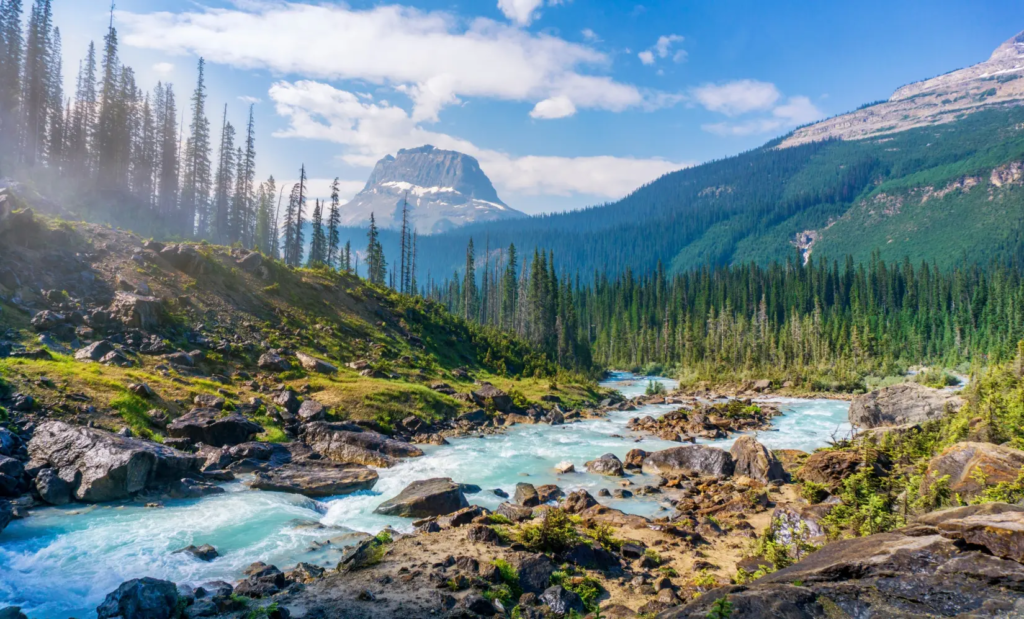Eco-tourism, a type of travel focused on green and environmental conservation, is gaining more attention in the United States. More travelers are choosing destinations and activities that help protect the environment while offering unique experiences. This shift shows a rising interest in responsible travel that supports local communities and preserves natural beauty.
What Is Eco-Tourism and Why Is It Important?
Eco-tourism means visiting natural areas in a way that does not harm the environment. It encourages travelers to respect wildlife, reduce waste, and support sustainable businesses. The goal is to protect natural habitats and promote awareness about conservation.

The U.S. offers many eco-tourism opportunities, from national parks to wildlife reserves. This type of travel helps local economies by creating jobs in rural and less-developed areas. It also educates visitors on environmental issues, motivating them to protect nature after they return home.
For more detailed insights into eco-tourism benefits, visit the National Geographic’s guide on sustainable travel
Factors Driving the Growth of Eco-Tourism in the U.S.
Several reasons explain why eco-tourism is becoming popular in the U.S.:
- Increased Environmental Awareness: People are more concerned about climate change and pollution. They want their travel to have a positive impact rather than harm the planet
- Desire for Unique Experiences: Travelers look for authentic, meaningful connections with nature, rather than just typical tourist spots
- Government Support: Many states promote eco-tourism through programs and protected areas, encouraging sustainable travel
- Rise of Outdoor Activities: Hiking, wildlife watching, kayaking, and camping attract visitors who enjoy nature and want to learn about ecosystems
The U.S. National Park Service plays a key role in supporting eco-tourism by managing protected lands responsibly. For more about U.S. park initiatives, see the National Park Service official website
Popular Eco-Tourism Destinations in the United States
Some U.S. locations stand out for eco-friendly travel:
- Yellowstone National Park: The first national park in the world, Yellowstone offers geothermal wonders and diverse wildlife while promoting sustainable visitor practices
- Glacier National Park: Known for its stunning glaciers and clean lakes, the park encourages eco-conscious hiking and low-impact camping
- Everglades National Park: This wetland ecosystem supports rare species and offers guided eco-tours that educate visitors about conservation
- Appalachian Trail: A popular long-distance hiking trail that allows visitors to explore nature while supporting trail maintenance and conservation groups
Travelers interested in planning eco-friendly trips can find detailed resources at the U.S. Travel Association
How Eco-Tourism Benefits Local Communities
Eco-tourism not only helps protect the environment but also supports local people. It creates new jobs in areas such as guiding, hospitality, and local craft sales. By involving community members, eco-tourism ensures that tourism income stays within the region, improving living standards without harming nature.
For example, tribal communities near national parks often lead cultural tours, sharing their traditions and promoting sustainable practices. This helps preserve cultural heritage and builds respect between visitors and locals.
Challenges and Future Outlook of Eco-Tourism
While eco-tourism is growing, it faces some challenges. Overcrowding in popular sites can damage fragile ecosystems. Not all tourism operators follow eco-friendly practices, which can reduce the overall benefit to nature.
To address these issues, education and regulation are key. Tourists must be aware of their impact, and businesses need to commit to sustainability standards. Technology can also help by monitoring visitor numbers and environmental health.
Experts believe that eco-tourism will continue to rise as more people seek meaningful travel experiences that protect the planet. It offers a way to enjoy America’s natural beauty responsibly.
For more on sustainable tourism trends, check out Travel + Leisure’s eco-travel section
Tips for Travelers Interested in Eco-Tourism

If you want to be a responsible eco-tourist, keep these tips in mind:
- Choose accommodations with green certifications or eco-friendly practices
- Use reusable water bottles and bags to reduce waste
- Respect wildlife by observing from a distance and not feeding animals
- Stay on marked trails to avoid damaging plants and soil
- Support local businesses that prioritize sustainability
These small actions can make a big difference in preserving natural areas for future visitors.
Conclusion: Embracing Sustainable Travel in the U.S.
The rise of eco-tourism in the United States reflects a shift toward more thoughtful and environmentally friendly travel. By choosing green destinations and practices, travelers can help conserve America’s natural treasures while enjoying unforgettable experiences.
As this trend grows, the hope is that more people will value nature’s importance and work to protect it. Whether visiting a national park or joining a local eco-tour, every trip can contribute to a healthier planet.
For further reading and resources, visit the U.S. Environmental Protection Agency’s travel and tourism page
Also Read – Journey Into America’s Least-Known But Most Stunning Places






